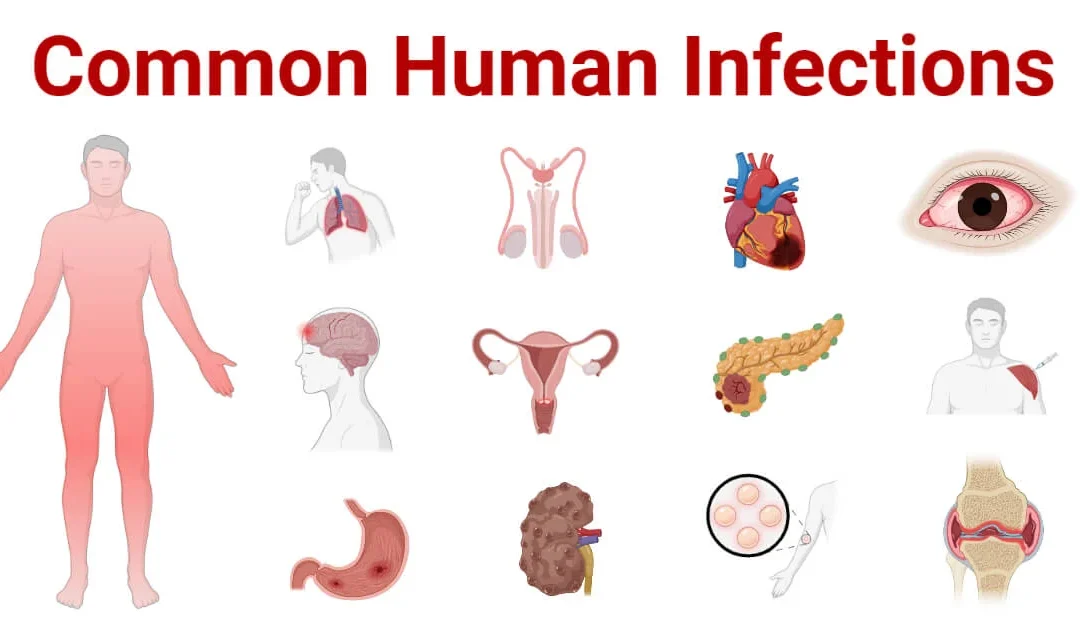Infections are a leading cause of illness and death worldwide, ranging from mild cases like the common cold to life-threatening conditions. Among them, some infections stand out as particularly dangerous due to their rapid progression, resistance to treatment, and potential to cause widespread harm. This blog explores the most serious types of infections, the factors that contribute to their severity, and the importance of prevention and timely treatment.
Banocide forte buy online is a medication used to treat parasitic infections like filariasis and eosinophilia. It works by eliminating parasites and reducing symptoms. Always take it under medical supervision and follow your doctor’s prescribed dosage and instructions.
Understanding Infections
Infections occur when harmful microorganisms, such as bacteria, viruses, fungi, or parasites, invade the body and disrupt its normal functions. The severity of an infection depends on several factors, including:
- Pathogen Virulence: Some microorganisms are more aggressive or produce toxins that cause significant damage.
- Host Immune Response: A weakened immune system increases vulnerability to severe infections.
- Accessibility to Treatment: The lack of timely medical care can turn treatable infections into life-threatening ones.
Top Serious Infections
1. Sepsis
What It Is: Sepsis is not a single infection but a life-threatening response to an infection. It occurs when the immune system’s reaction to a localized infection spreads throughout the body, causing systemic inflammation and organ dysfunction. Buy niclosamide is a medication used to treat parasitic infections like filariasis and eosinophilia.
Do you want to visit Haridwar? travel agents in Haridwar is the right place to plan your tour. You can book your tour from here.
- Causes: Commonly triggered by infections like pneumonia, urinary tract infections, or bloodstream infections.
- Symptoms: Fever, rapid heart rate, confusion, difficulty breathing, and low blood pressure.
- Why It’s Serious: Sepsis progresses rapidly and can lead to septic shock, organ failure, and death if not treated promptly.
Infections range from mild to life-threatening, but some stand out due to their potential to cause widespread harm or death. Among these, sepsis is often regarded as one of the most serious. Sepsis occurs when the body’s response to an infection becomes dysregulated, leading to systemic inflammation, organ failure, and, if untreated, death. It can be triggered by any infection, such as pneumonia, urinary tract infections, or bloodstream infections. The condition progresses rapidly, making early detection and treatment crucial to survival.
2. Meningitis
What It Is: Meningitis is an inflammation of the protective membranes covering the brain and spinal cord (meninges).
- Causes: Can be caused by bacteria (Neisseria meningitidis, Streptococcus pneumoniae), viruses, or fungi.
- Symptoms: Severe headache, stiff neck, high fever, sensitivity to light, and nausea.
- Why It’s Serious: Bacterial meningitis can cause brain damage, hearing loss, or death within hours if untreated.
3. Endocarditis
What It Is: An infection of the inner lining of the heart (endocardium), usually involving the heart valves.
- Causes: Often caused by bacteria entering the bloodstream through dental procedures, skin infections, or intravenous drug use.
- Symptoms: Persistent fever, fatigue, heart murmur, and blood in urine.
- Why It’s Serious: It can lead to heart valve damage, heart failure, or stroke.
4. Tuberculosis (TB)
What It Is: A bacterial infection caused by Mycobacterium tuberculosis, primarily affecting the lungs but capable of spreading to other organs.
Do you want to visit char dham? char dham tour operator is the right place to plan you Char Dham tour. You can book you tour from here.
- Symptoms: Persistent cough, weight loss, night sweats, and fever.
- Why It’s Serious: Untreated TB can spread within the body and to others, causing severe complications. Multi-drug-resistant TB (MDR-TB) poses a significant challenge.
5. Necrotizing Fasciitis
What It Is: Commonly known as “flesh-eating disease,” this rare but deadly infection destroys tissue under the skin.
- Causes: Often caused by bacteria like Streptococcus pyogenes entering through a cut or wound.
- Symptoms: Severe pain, swelling, fever, and blackened skin.
- Why It’s Serious: It progresses rapidly, requiring immediate surgical intervention to prevent death.
6. Ebola Virus Disease
What It Is: A severe and often fatal viral infection caused by the Ebola virus.
- Symptoms: High fever, severe headache, muscle pain, vomiting, diarrhea, and unexplained bleeding.
- Why It’s Serious: It has a high mortality rate, spreads through bodily fluids, and lacks a universally available cure.
7. HIV/AIDS
What It Is: Human Immunodeficiency Virus (HIV) attacks the immune system, leading to Acquired Immunodeficiency Syndrome (AIDS) if untreated.
- Symptoms: Initial flu-like symptoms, followed by a long asymptomatic phase. AIDS manifests as severe immune suppression.
- Why It’s Serious: Untreated HIV leads to opportunistic infections and cancers, significantly reducing life expectancy.
8. Multidrug-Resistant Infections
What It Is: Infections caused by bacteria that are resistant to multiple antibiotics, such as MRSA (Methicillin-resistant Staphylococcus aureus) and CRE (Carbapenem-resistant Enterobacteriaceae).
- Why It’s Serious: These infections are difficult to treat, leading to prolonged illness, higher medical costs, and increased mortality.
Factors Contributing to Severe Infections
1. Delay in Diagnosis
Symptoms of severe infections often overlap with less serious conditions, leading to delayed diagnosis and treatment.
2. Antibiotic Resistance
The overuse and misuse of antibiotics have led to the emergence of drug-resistant pathogens, making treatment more challenging.
Do you want to visit Indiar? tour operator in India is the right place to plan your tour. You can book your tour from here.
3. Immunocompromised States
Individuals with weakened immune systems, such as those undergoing chemotherapy, HIV patients, or transplant recipients, are more vulnerable to severe infections.
4. Globalization and Urbanization
Increased travel and population density facilitate the spread of infectious diseases.
Prevention Strategies
1. Vaccination
Vaccines are one of the most effective tools against severe infections like meningitis, tuberculosis, and viral infections such as hepatitis and influenza.
2. Hygiene Practices
- Wash hands regularly with soap and water.
- Avoid touching your face with unwashed hands.
- Keep wounds clean and covered.
3. Safe Food and Water Practices
- Drink clean, filtered water.
- Avoid raw or undercooked foods.
4. Responsible Antibiotic Use
- Use antibiotics only when prescribed.
- Complete the full course of treatment.
5. Early Screening and Monitoring
Regular check-ups and early diagnostic tests can identify infections before they become severe.
When to Seek Medical Attention
Seek immediate medical help if you experience any of the following:
- High fever persists for more than three days.
- Severe pain, especially with skin discoloration or swelling.
- Difficulty breathing or chest pain.
- Confusion or altered mental status.
- Symptoms worsening despite treatment.
Treatment Approaches for Serious Infections
- Antibiotics and Antivirals: Prescribed based on the pathogen causing the infection.
- Surgical Intervention: For conditions like necrotizing fasciitis or abscesses.
- Supportive Care: Includes oxygen therapy, intravenous fluids, and organ support in intensive care settings.
- Targeted Therapies: Advanced treatments, such as monoclonal antibodies for Ebola, are emerging as effective solutions.
Conclusion
While many infections are treatable, the most serious types, such as sepsis, meningitis, and drug-resistant infections, require immediate attention and specialized care. Prevention, early diagnosis, and adherence to treatment are critical in managing these conditions. By staying informed and taking proactive measures, you can reduce the risk of severe infections and protect your health.



